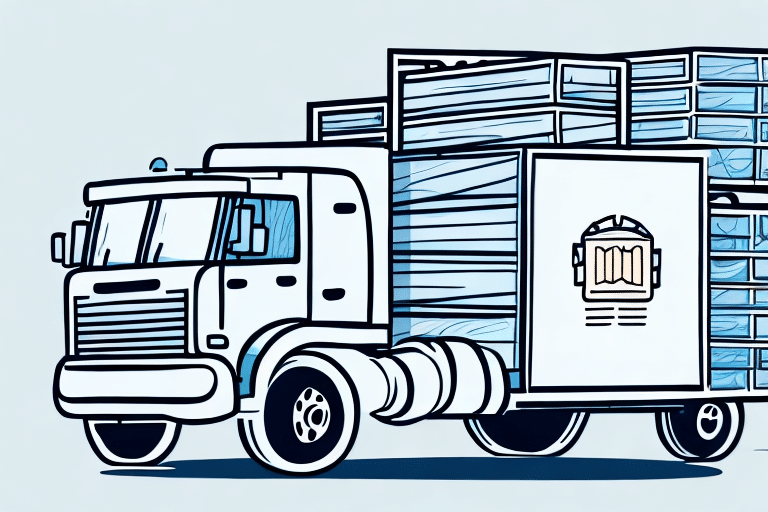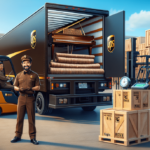Choosing the Right Shipping Company for Large Packages
Selecting the appropriate shipping company is crucial when handling large packages. An experienced and reliable company ensures that your items arrive safely and on time. Consider the following factors when making your decision:
Experience and Expertise
Opt for companies that specialize in large package shipping and have a proven track record. Expertise in handling oversized items can prevent potential damages and delays. According to the Logistics Bureau, experienced shippers are better equipped to navigate the complexities of large item transportation.
Cost and Pricing
Shipping large packages can be costly. It's essential to compare rates from multiple carriers to find competitive pricing. Many companies offer discounts for bulk shipments or loyal customers. Utilizing shipping cost calculators can help estimate expenses accurately.
Customer Service
Reliable customer service ensures that any issues during shipping are promptly addressed. Look for companies that offer multiple contact methods, such as phone, email, and live chat. High customer satisfaction ratings are a good indicator of dependable service.
Understanding Shipping Options for Large Packages
Different shipping methods cater to various needs based on size, weight, and urgency. Understanding these options helps in selecting the most efficient and cost-effective method.
Freight Shipping: LTL vs. FTL
Freight shipping is ideal for large packages. It comes in two primary forms:
- LTL (Less-Than-Truckload): Combines multiple shipments onto one truck, reducing costs. Suitable for medium-sized packages.
- FTL (Full Truckload): Utilizes the entire truck for a single shipment, offering faster delivery and reduced handling.
According to the FreightWaves, LTL shipping accounts for approximately 60% of all freight movements in North America.
Transportation Modes: Ground, Air, and Sea
The mode of transportation affects delivery speed and cost:
- Ground Shipping: Most cost-effective for domestic shipments but slower.
- Air Shipping: Fastest method, ideal for urgent deliveries but more expensive.
- Sea Shipping: Best for international shipments of extremely large or heavy items, though it has longer transit times.
Packaging Materials and Best Practices
Proper packaging is essential to protect large packages during transit. Using the right materials and techniques minimizes the risk of damage.
Selecting Sturdy Packaging
Choose high-quality, sturdy boxes or crates designed to support heavy weights. Double-walled corrugated boxes offer increased strength for heavy items. For oversized shipments, custom crates may be necessary.
Securing and Protecting Contents
Use appropriate packing materials such as:
- Bubble Wrap or Foam Inserts: Protects delicate items.
- Packing Peanuts or Air Pillows: Fills empty spaces to prevent movement.
- Straps or Tape: Secures the package firmly.
According to the Packaging Strategies, over-packaging can also lead to increased shipping costs and environmental impact, so it's important to find a balance.
Labeling and Marking Packages Correctly
Accurate labeling ensures packages are handled correctly and reach their intended destinations without delays.
Addressing and Information
Include clear and legible addresses for both sender and recipient. Use waterproof labels or cover addresses with clear tape to protect them from damage. Incorporate barcodes or QR codes for efficient scanning and tracking.
Handling Instructions
Mark packages with specific handling instructions such as:
- Fragile: Indicates that the contents are delicate and require careful handling.
- This Side Up: Ensures the package is oriented correctly during transit.
- Handle with Care: Alerts handlers to treat the package gently.
Proper markings reduce the risk of mishandling and ensure packages are treated according to their specific needs.
Safe Loading and Unloading Procedures
Implementing safe practices during loading and unloading minimizes the risk of accidents and damage to packages.
Proper Equipment and Techniques
Use appropriate lifting equipment such as forklifts, pallet jacks, or cranes for heavy packages. Train staff on proper lifting techniques to prevent injuries and ensure efficient handling.
Securing Packages During Transport
Ensure that packages are securely fastened to prevent shifting or falling during transit. Use straps, ropes, or specialized restraints to maintain stability. Proper weight distribution is essential to avoid tipping or undue stress on the transport vehicle.
Tracking and Handling Claims
Effective tracking ensures visibility of your shipment's progress, while handling claims properly protects your interests in case of issues.
Tracking Technologies and Services
Most carriers offer tracking via online portals, allowing real-time updates on your package's location. Advanced tracking services may include:
- GPS Tracking: Provides precise location data.
- Geofencing: Sends alerts when the package enters or exits predefined areas.
Utilizing these technologies enhances shipment security and allows for proactive issue resolution.
Filing Damage Claims Effectively
If a package arrives damaged or doesn't arrive at all, promptly file a claim with the shipping company. Steps include:
- Documenting the damage with photographs.
- Providing proof of value for the shipped items.
- Completing the carrier's claim form accurately.
Understanding each carrier's specific claim procedures can expedite the resolution process. Refer to the American Express guide for detailed instructions on filing shipping claims.
Cost Management and Insurance
Managing costs effectively and securing appropriate insurance safeguards your investment in large package shipments.
Cost-Effective Shipping Strategies
Implement strategies to reduce shipping costs without compromising safety:
- Optimize Packaging: Use the smallest possible packaging to reduce dimensional weight charges.
- Consolidate Shipments: Combine multiple packages into a single shipment to take advantage of bulk rates.
- Negotiate Rates: Engage with carriers to secure better pricing based on shipment volume.
Insurance Options for Large Packages
Basic liability coverage is typically included with shipping services, but additional insurance may be necessary for high-value items. Options include:
- Declared Value: Guarantees a specific payout in case of loss or damage.
- Third-Party Insurance: Offers broader coverage options and higher limits.
Assess the value of your shipment and choose an insurance plan that provides adequate protection. Refer to the Insureon guide for more information on shipping insurance types and benefits.
International Shipping Considerations
Shipping large packages internationally involves additional complexities compared to domestic shipments. Key considerations include:
Documentation and Compliance
Ensure all necessary documentation is accurately completed, including:
- Commercial Invoice: Details the contents and value of the shipment.
- Packing List: Lists all items included in the package.
- Customs Declarations: Complies with the destination country's regulations.
Non-compliance can result in delays, fines, or confiscation of goods. The U.S. Customs and Border Protection provides comprehensive guidelines on international shipping regulations.
Customs, Duties, and Taxes
Understand the customs duties and taxes applicable to your shipment. These costs vary based on the destination country and the nature of the goods. Researching tariff rates and classification codes can help estimate additional expenses. Tools like the Export.gov tariff calculator can assist in this process.
Carrier Selection for International Shipping
Choose a carrier experienced in international logistics. Factors to consider include:
- Global Network: Presence in the destination country for smoother transit.
- Tracking Capabilities: Enhanced tracking for international shipments.
- Customs Expertise: Ability to navigate complex customs procedures.
Companies like DHL and UPS are renowned for their international shipping services and expertise.
Best Practices for Shipping Fragile Items in Large Packages
Shipping fragile items requires extra care to prevent damage. Implement the following best practices:
Appropriate Packaging Materials
Use high-quality protective materials such as:
- Bubble Wrap
- Packing Peanuts
- Foam Inserts
These materials absorb shocks and provide cushioning during transit.
Double-Boxing Fragile Items
For added protection, place fragile items in smaller boxes and then place those boxes inside larger ones with additional padding between them. This method reduces the risk of damage from external impacts.
Clear Fragile Labels
Mark packages clearly with "Fragile" or "Handle with Care" labels to alert handlers to take extra precautions. Visible labeling ensures that the package is handled appropriately throughout the shipping process.
Future of Shipping Technology: Implications for Large Packages
Advancements in shipping technology are transforming how large packages are handled, offering increased efficiency and safety.
Automation and Robotics
Automated sorting systems and robotics streamline warehouse operations, reducing human error and speeding up the handling process. The Forbes Technology Council highlights how automation enhances accuracy and efficiency in large package shipping.
Drone Delivery
Drone technology is emerging as a solution for rapid delivery of large packages, especially in remote areas. Companies like Amazon Prime Air are testing drones to expand their delivery capabilities.
Artificial Intelligence and Data Analytics
AI and data analytics optimize shipping routes, predict maintenance needs for transport vehicles, and enhance overall logistics management. These technologies contribute to more efficient and reliable shipping processes.
Conclusion
Shipping large packages safely and efficiently involves careful planning and consideration of various factors, including choosing the right shipping company, understanding shipping options, using proper packaging materials, accurate labeling, and implementing safe loading and unloading procedures. Additionally, leveraging tracking technologies, managing costs effectively, securing appropriate insurance, and staying informed about technological advancements can significantly enhance the shipping experience. By adhering to these best practices, you can ensure that your large packages reach their destinations intact and on time.






















